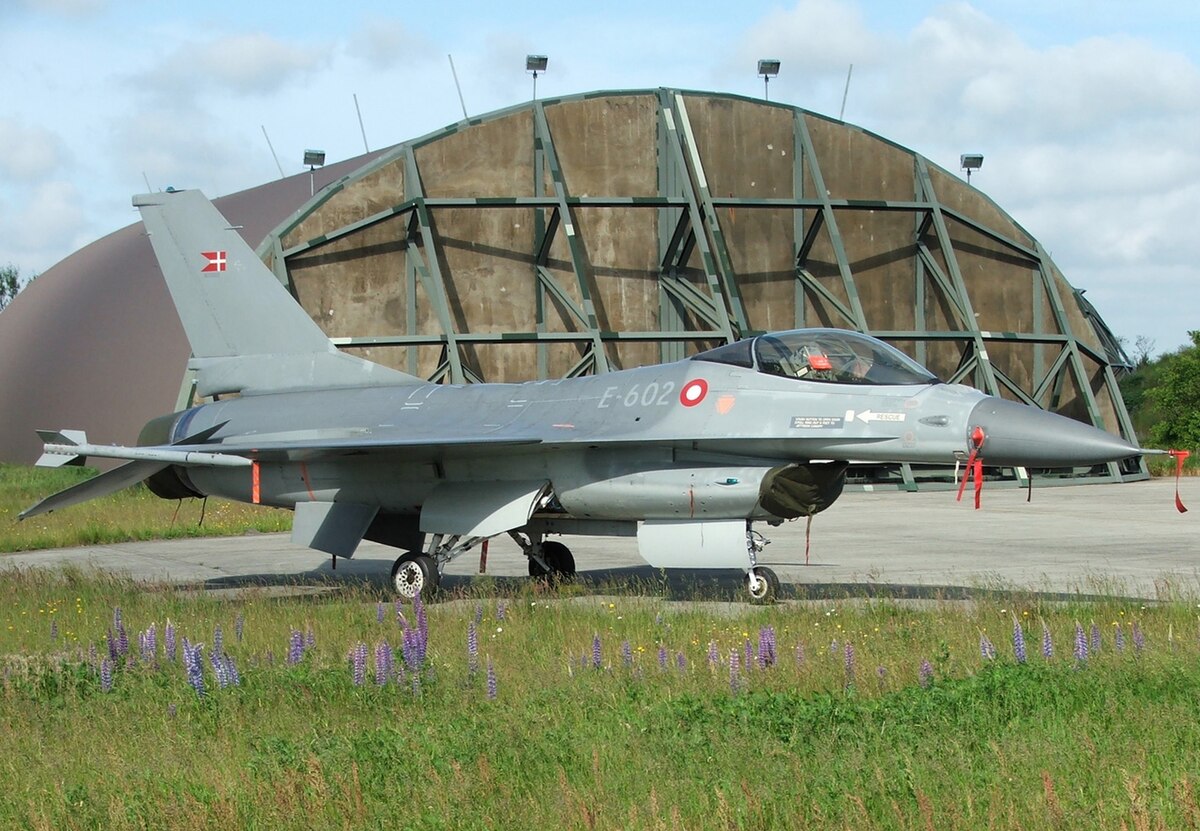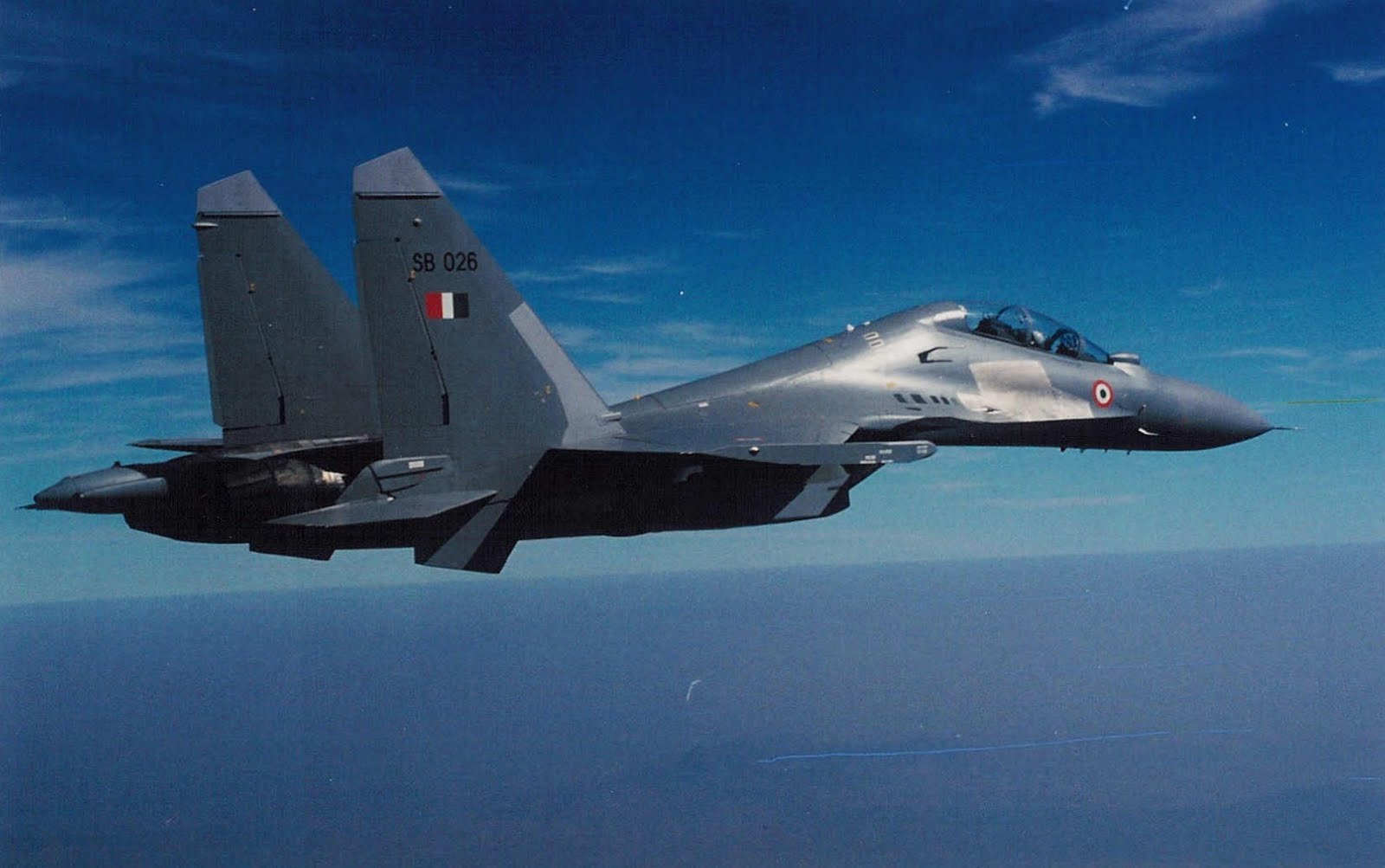The Pakistan Air Force’s (PAF) AMRAAM armed F-16s and Indian Air Force’s (IAF) R-77 and R-27ER armed Su-30 MKI engaged in a limited beyond visual range (BVR) combat a day after the 2019 Balakot strike. The main lesson from that engagement was the importance of BVR missile range advantage for aerial engagements.
Russia’s Su-35 and the US F-16 have had close encounters in Syria. On April 2, 2023, one Russian Su-35 conducted a reportedly unsafe and unprofessional intercept of a US F-16 aircraft.
The U.S. Central Command lamented a “significant spike” in aggressive Russian military flights over Syria; it published videos of two different interactions between American aircraft and fully-armed Russian Su-35 Flanker-Es over Syria. The videos were reportedly captured using aircraft targeting pods and other sensor systems.
As Ukraine inducts the F-16, it will face the Russian Sukhoi stable’s air horses, the Su-27, Su-30, and Su-35, in air engagements. One Ukrainian pilot who flew the F-16 said his country’s Su-27s were superior and would absolutely manhandle the F-16 in a dogfight. We need to understand and assess the truth.
F-16 Fighting Falcon
The General Dynamics (later Lockheed Martin) F-16 Fighting Falcon is an American single-engine supersonic multirole fighter aircraft originally developed for the United States Air Force (USAF). Originally designed as an air superiority fighter, it evolved into a successful all-weather multirole aircraft, with over 4,600 built since 1976.
The aircraft first flew in January 1974 and joined the USAF in August 1978. Although no longer purchased by the USAF, improved versions are being built for export. The F-16 has been procured by the air forces of 28 other nations. With 2145 F-16s still in service, it is the largest single type operating around the world. It is still in production, and at least five more countries are in the process of acquiring it.
When it was inducted, its greatest strength was the fly-by-wire supported relaxed static stability, which gave it great maneuverability. Also, the combination of airborne radar and BVR missiles made it a great fighter. The aircraft has seen continuous upgrades. It now has wing root conformal containers.
F-16 Fighter Jets For Ukraine
After losing a large number of its fighter aircraft on the ground, Ukraine had been seeking a modern fighter from the West. Many Western air forces were in the process of replacing their F-16s with F-35.
In May 2023, an international coalition of the United Kingdom, the Netherlands, Belgium, and Denmark announced their intention to train Ukrainian jet pilots on the F-16 ahead of possible future deliveries to increase the Ukrainian Air Force capabilities in the current Russo-Ukrainian War.
Denmark offered its aircraft for training. Romania offered to host the future training center. A number of Ukrainian pilots began training in Denmark and the U.S. On August 17 2023, the U.S. approved the transfer of F-16s from the Netherlands and Denmark to Ukraine after the Ukrainian pilots had completed their training.

The two countries will donate up to 61 F-16 AM/BM Block 15 MLU fighters to Ukraine, for a total of 85 F-16s pledged to Ukraine. The warplanes are expected in Ukrainian skies by late summer 2024.
The Block 15 Mid-Life Update (MLU) standard gave a capability analogous to that of F-16C/D Block 50/52 aircraft, with an improved IFF system, radio, and radar and the ability to carry advanced BVR missiles (AIM-120).
Su-30
The Sukhoi Su-30 MKI is a two-seater, twinjet multirole air superiority fighter developed by Russia’s Sukhoi and built under license by India’s Hindustan Aeronautics Limited (HAL) for the IAF. It is a variant of the Sukhoi Su-30/Su-27 family and is a heavy, all-weather, long-range fighter.
The aircraft was tailor-made for Indian specifications and integrates Indian systems and avionics as well as French and Israeli subsystems. It has abilities similar to the Sukhoi Su-35, with which it shares many features and components. The first Russian-made Su-30MKI was accepted by the IAF in 2002. The first Su-30MKI assembled in India entered service in November 2004. It is the backbone of the IAF, with nearly 260 in service.
India plans to upgrade the aircraft with AL-41F turbofan engines, the same as the ones on the Sukhoi Su-35. India is increasing the Su-30MKI’s BVR capability by arming its entire fleet with the indigenous Astra BVR missile (110 km) and its future variants (160+ km). It will also have new reconnaissance pods.
On November 30, 2023, the Super Sukhoi upgrade program received its Acceptance of Necessity (AoN) for Rs 60,000 crores ($7.5B). Under this upgrade, many older Russian subsystems will be replaced by more modern Indian subsystems.
The current radar will be replaced with a modern AESA radar, probably an upgraded variant of the DRDO Uttam radar. Indigenous DARE’s High Band Jammer Pod (HBT), Dhruti Radar Warning System, and Dual Color Missile, Approach Warning System, would enhance the electronic warfare capabilities of Sukhoi-30MKI.
Comparison: Su-30 MKI vs F-16
| Su-30 MKI | F-16 | |
| Country | Russia | USA |
| Length | 21.935 m | 15.06 m |
| Wing Span | 14.7 m | 9.96 m |
| Empty weight | 18,400 kg | 8,573 kg |
| Max Take-Off Weight | 38,800 kg | 19,187 kg |
| Top Speed | Mach 2 | Mach 2.05 |
| External Hard Points and Payload | 12 (including 10 AAMs)
8,130 kg |
11, (including 8 AAMs) 7,700 kg |
| Combat Radius Internal Fuel | 1,500 km | 550 km |
| Engine and Thrust | 2 × Lyulka AL-31FP (123 kN each) | 1 × General Electric F110-GE-129 (131 kN) |
| Radar and Range | NIIP N011M Bars (Panther) (400 km search, 200 km track) | Block 15’s APG-66(V)2
150 Km |
| AAM (Range) | R-77-1, RVV-SD: 110 Km, later R-77M (193 Km) | AIM-120 AMRAAM (120 km) |
F-16 vs Su 30 In Ukraine War
To begin with, it is unfair to compare a Su-30 class with a much smaller F-16. It is like comparing apples to pears. Su-27/30 should be compared to F-15 and MiG-29 to F-16. But since such a faceoff could now be a reality, let us see how they stand.
Su-27/30 is admired for its tough-looking airframe, high all-axis maneuverability, and the “cobra” maneuver. Cobra manoeuvres tactical employability has been debated for decades, and there is no clarity on employability.
The author has had one-on-one discussions with the inventor Viktor Pugachev in Moscow, and it is clear that the timing of employing the maneuver could make or break the tactical situation. But what matters today is a radar that can operate in a high electronic threat environment and long-range AAMs. Depending on who has the better combination, either of the two could score on this count.
What matters in close combat is the pilot’s combat flying skills. India’s MiG 21s shot down much superior F-104s in Indo-Pak wars. Similarly, Israeli F-16s outdid all types of Russian aircraft in combat.
The Su-30 is a larger aircraft and will be seen earlier by both radar and visual combat. However, if such a situation develops, the Su-30 will outscore in high-angle-of-attack maneuvering and weapon pointing. The Sukhoi fighter has higher thrust and can sustain higher energy for longer. The Su-30 will also have higher endurance to sustain in longer combat. It is more agile and better armed with more missiles.
As of date, the AIM-120 has a range edge on the R-77, but the Russian R-37M outperforms most Western missiles. Newer missiles like the AIM-260 Joint Advanced Tactical Missile (JATM) will not be available to Ukraine. Even Meteor is better than the AIM-120. The F-16s will also be threatened by the Russian MiG-31, which is armed with six very long-range R-37M AAMs.
F-16s “Sitting Ducks” For Russian MiG-31 Fighters? Putin Warns Of Consequences Over Fighting Falcons
The F-16s being given to Ukraine do not have advanced radar or other sensors like those on Block 70/72. Similarly, the electronic protection suite is not the latest technology. The U.S. won’t risk giving it, lest it fall into Russian hands.
The Israeli F-16s could outperform a Su-30 because of better and more aggressive pilot training, group tactics, and continuous war exposure. The same cannot be said of the still under-trained Ukrainian pilots, who have for years been groomed on Russian combat philosophy.
Russia has already threatened to strike the F-16 airbase on the very first day the aircraft arrive. Operating F-16s from another country’s soil is not an option, as that would expand the war.

Digital Combat Simulation
If both aircraft were subjected to a very accurate Digital Combat Simulation (DCS), each would realize its strengths and weaknesses. Finally, the one that exploits these will be the victor.
In fighter combat, the victor is most often determined by “See first, Shoot First.” In a slow-speed turning fight, the Sukhoi will have the F-16 dropping off the sky. The F-16 must best engage in a higher-speed fight.
F-16 must also take advantage of being smaller and, so, a relatively harder target to see and hit. F-16 must always work towards having better radar, avionics, and BVR missiles. If ever it has to engage a Sukhoi, it must be in BVR combat only. A Block 70 F-16 could be a better match to take on a Sukhoi.
F-16 vs Su-30 MKI In India-Pakistan Conflict
The PAF currently has around 75 F-16s in active service, comprising 44 F-16 AM/BM Block 15 MLU, 13 F-16A/B ADF, and 18 F-16C/D Block 52+ variants. They are the APG-68(V9) radar and can carry the AIM-120C-5 missile.
Post-air engagement on February 27 2019, Pakistan tried building a narrative that they had shot down a Su-30MKI Flanker-H. India not only denied but actually flew the same tail number at that year’s IAF day parade. IAF Su-30MKI had dodged and jammed 3-4 AMRAAMs during the BVR fight.
India has nearly 260 Su-30 MKI. Their radar has a longer range and is equipped with deadly BVR missiles. The Su-30 MKI can carry ten Astra Mk1 (110 km) missiles, which are already integrated. Astra-2 (160 km) and Astra-3 (350 km) are in the trials phase. Astra-2 will be inducted in 2024. Clearly, the IAF Su-30 MKI will have both the BVR (beyond visual range) and WVR (within visual range) edges. This will increase considerably after the Su-30 MKI upgrade.
Conclusion
In terms of sheer performance, the Su-27/30 is one of the most impressive aircraft ever built. It has tremendous power, a high power/weight ratio, and eye-popping maneuverability.
Therefore, Russians chose to exploit the basic design for many variants, right up to the Su-35. Chinese, too, have copied the basic design for their J-11, J-15, and J-16.
Conversely, the F-16s are still flying in large numbers. It is a pleasurable aircraft to fly and operate. Pilots love the F-16 Fighting Falcons.
F-16s have seen much greater combat and have had an enviable “aerial kill” success record, albeit mostly in West Asia and not against the Su-30 class. In Ukraine, the F-16s are at risk of being on the losing side.
The last bullet has yet to be fired in the Russia-Ukraine conflict. The Su-30 vs. F-16 showdown will happen, and the jury will be out soon.
- Air Marshal Anil Chopra (Retired) is an Indian Air Force veteran fighter test pilot and is the Ex-Director-General of the Center for Air Power Studies in New Delhi. He has been decorated with gallantry and distinguished service medals while serving in the IAF for 40 years. He tweets @Chopsyturvey
- Follow EurAsian Times on Google News




